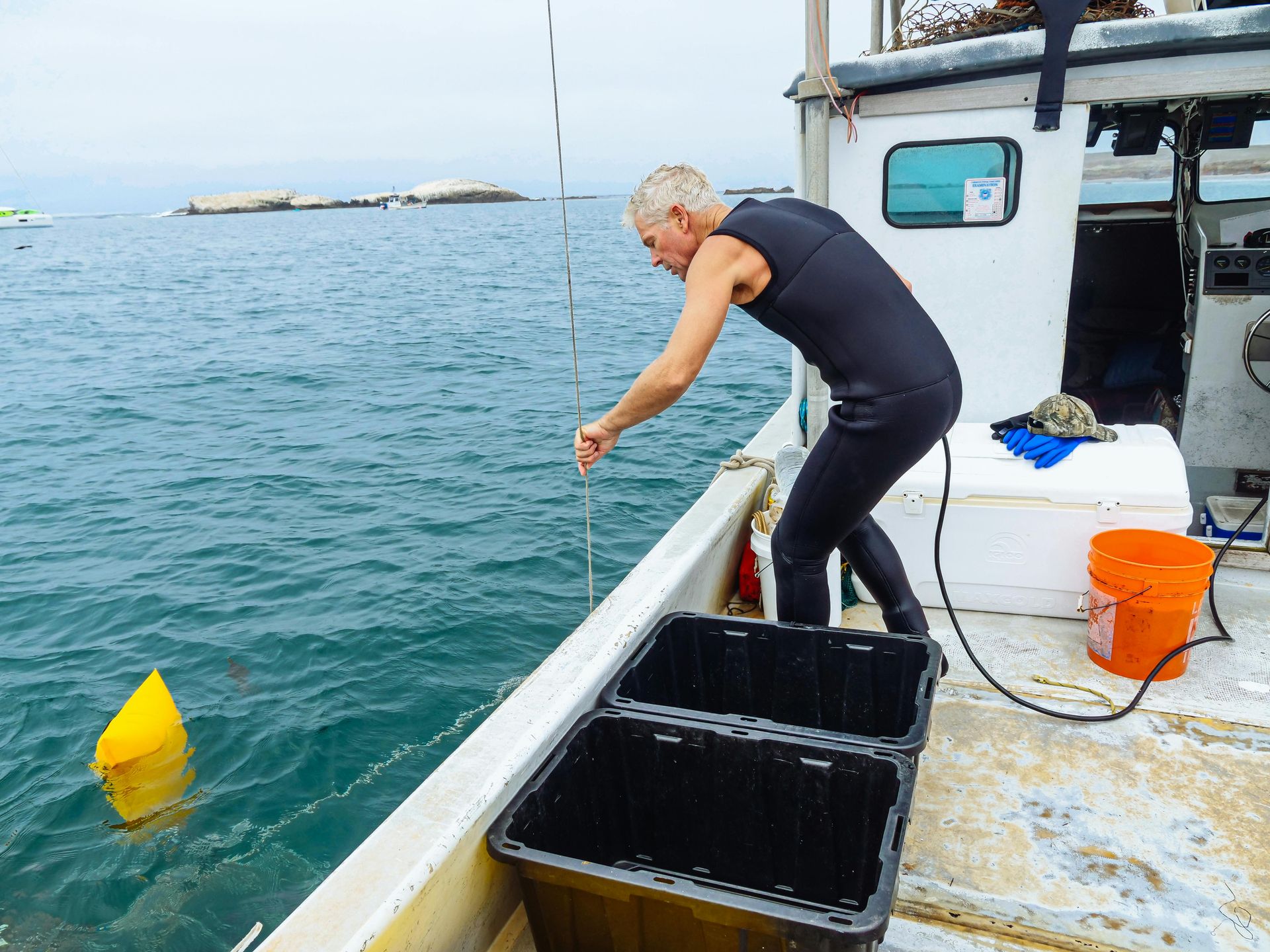Adams & Associates - Learn with Us
The Ultimate Guide to Hurricane-Proofing Your Business: Everything Hawaii Entrepreneurs Need to Survive Storm Season
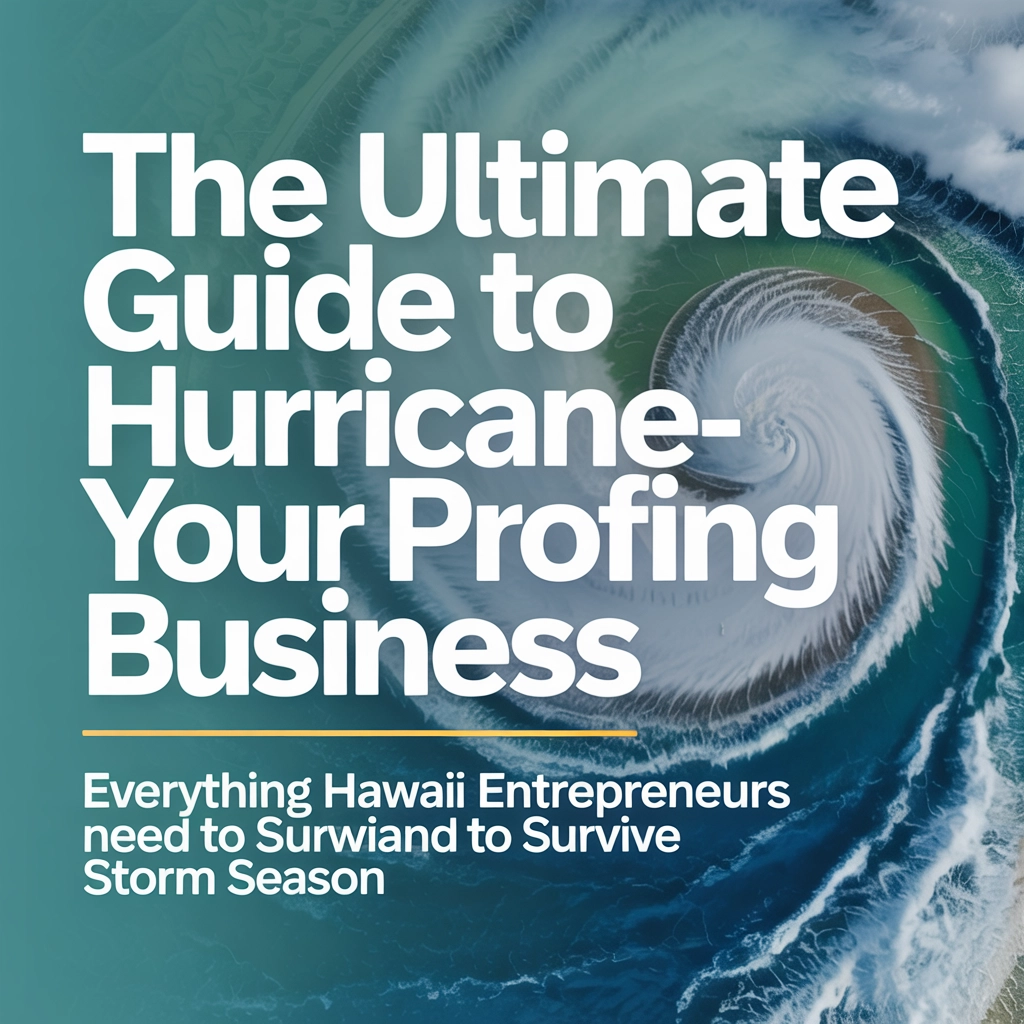
Living and running a business in paradise comes with some serious responsibilities. Hurricane season runs from June 1st through November 30th, and the statistics are pretty sobering: 40% of businesses never reopen after a major disaster. Of those that do manage to get back up and running, only 29% are still around after two years.
But here's the good news - you don't have to become part of those statistics. With the right preparation, your business can weather any storm that comes your way.
Know Your Risk Timeline
Hawaii's location puts us right in the hurricane corridor. Unlike mainland businesses that might face occasional severe weather, island businesses deal with unique challenges:
- Geographic isolation makes getting help harder
- Limited evacuation routes can trap you and your employees
- Supply chain disruptions last longer when you're in the middle of the Pacific
The key is thinking about hurricane prep as a year-round commitment, not something you scramble to do when a storm is already heading our way.
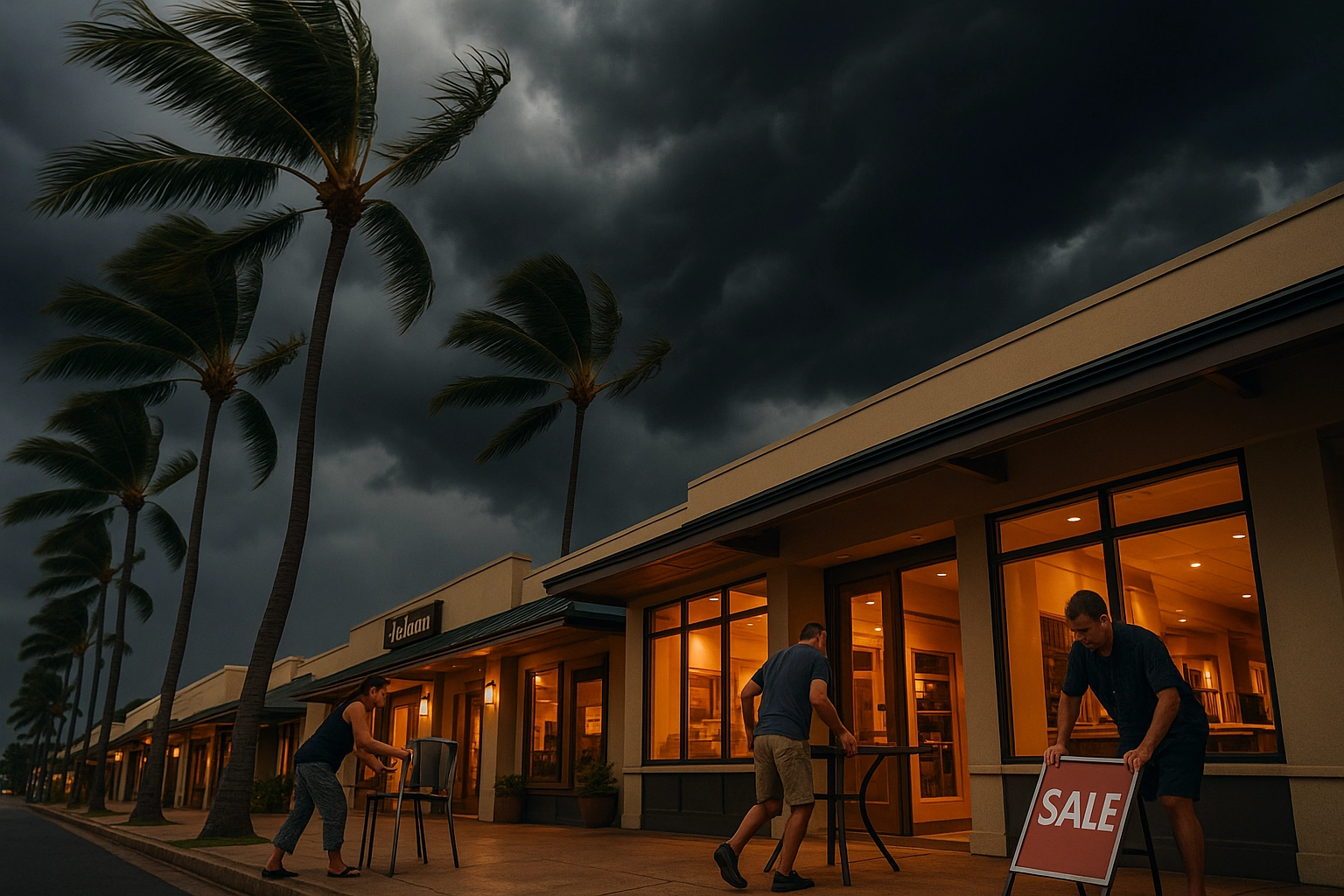
Build Your Business Continuity Plan
Every business needs a written plan that covers how you'll protect three things: your people, your property, and your operations. Don't overthink this - start simple and build from there.
Your plan should answer these basic questions:
- How will you keep employees safe?
- What happens to your inventory and equipment?
- How will you communicate with customers and vendors?
- Where will critical documents and data be stored?
- How will you maintain cash flow during closures?
Start with a basic template and customize it for your specific business. A food truck has different needs than a law office, but both need plans.
Protect Your Financial Foundation
Get Flood Insurance Now
Here's something that surprises a lot of business owners: standard commercial insurance doesn't cover flood damage. In Hawaii, where hurricanes can cause unexpected flooding anywhere on the island, this is a huge gap.
Flood insurance through the National Flood Insurance Program costs about $700 per year on average. That's roughly $60 per month to protect your entire business from flood damage - it's honestly one of the best deals in insurance.
Important: Flood insurance has a 30-day waiting period, so you can't wait until a storm is approaching.
Document Everything
Take photos and videos of your business space, equipment, and inventory right now. Store these in the cloud where you can access them from anywhere. If you need to file an insurance claim later, having this documentation makes the process much smoother.
Create a simple inventory list that includes:
- Equipment with serial numbers and purchase dates
- Inventory with approximate values
- Important business assets and their replacement costs
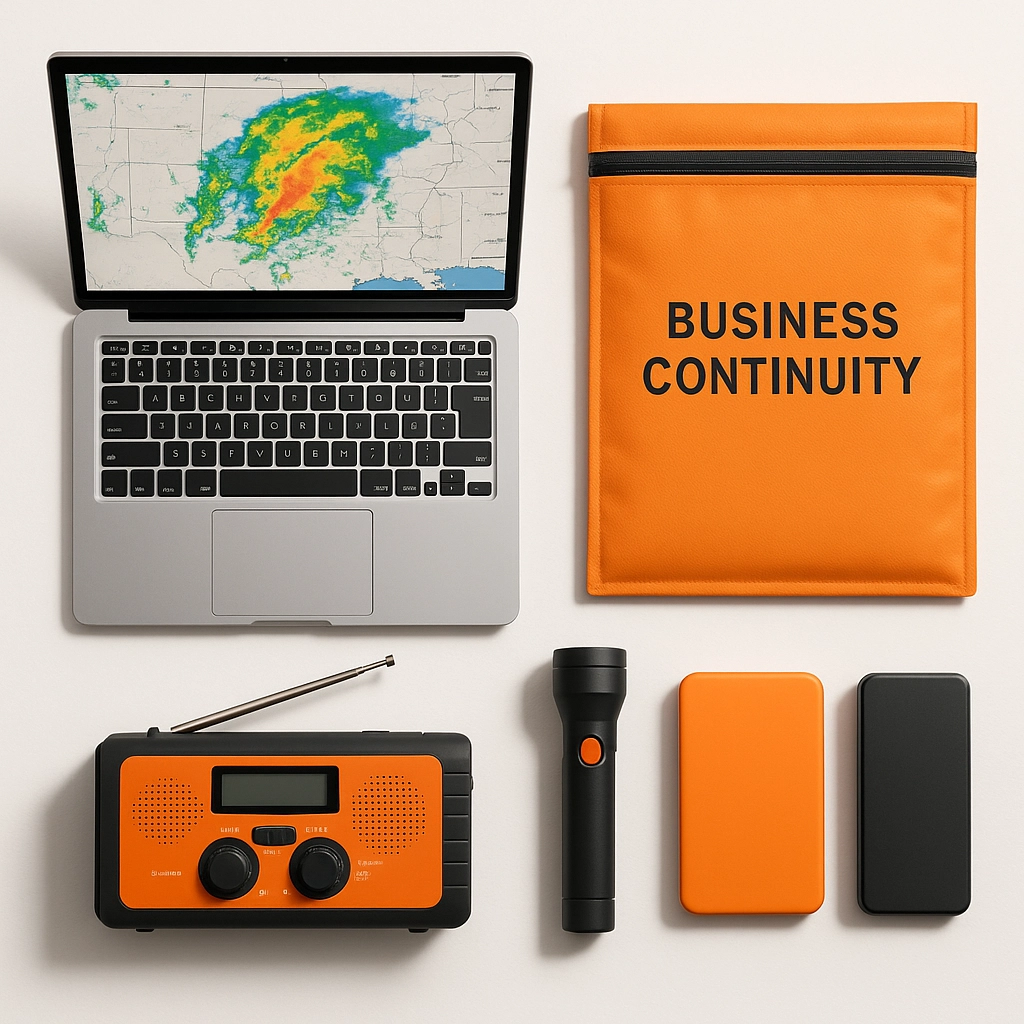
Secure Your Physical Space
Strengthen Your Building
Get a roof inspection before hurricane season starts. High winds can turn small roof problems into major disasters. Fix any issues you find - it's much cheaper than dealing with water damage later.
Protect your windows and doors. Install permanent storm shutters if possible, or at least have plywood cut and ready to go. Measure everything ahead of time and label each piece so installation goes quickly when you're under pressure.
Secure Your Stuff
Heavy furniture and equipment can become dangerous projectiles in high winds. Here's what to do:
- Bolt down or strap large equipment to walls or floors
- Move inventory to the highest, most secure part of your building
- Invest in waterproof containers for your most valuable items
- Create a "grab and go" kit with essential items you can quickly take if you need to evacuate
Plan for Employee Safety
Your employees are your most important asset. Having a clear safety plan protects them and protects your business from liability.
Create an Evacuation Plan
Your evacuation plan needs to cover:
- Clear triggers for when to evacuate (don't wait for official orders)
- Multiple exit routes in case some are blocked
- Meeting locations where everyone can check in
- Communication methods to account for all staff
Practice your evacuation plan at least twice a year. When adrenaline is pumping during a real emergency, people fall back on what they've practiced.
Keep Contact Information Updated
Maintain current phone numbers and email addresses for all employees. Include emergency contacts and out-of-state relatives who can help track people down if local communication systems fail.
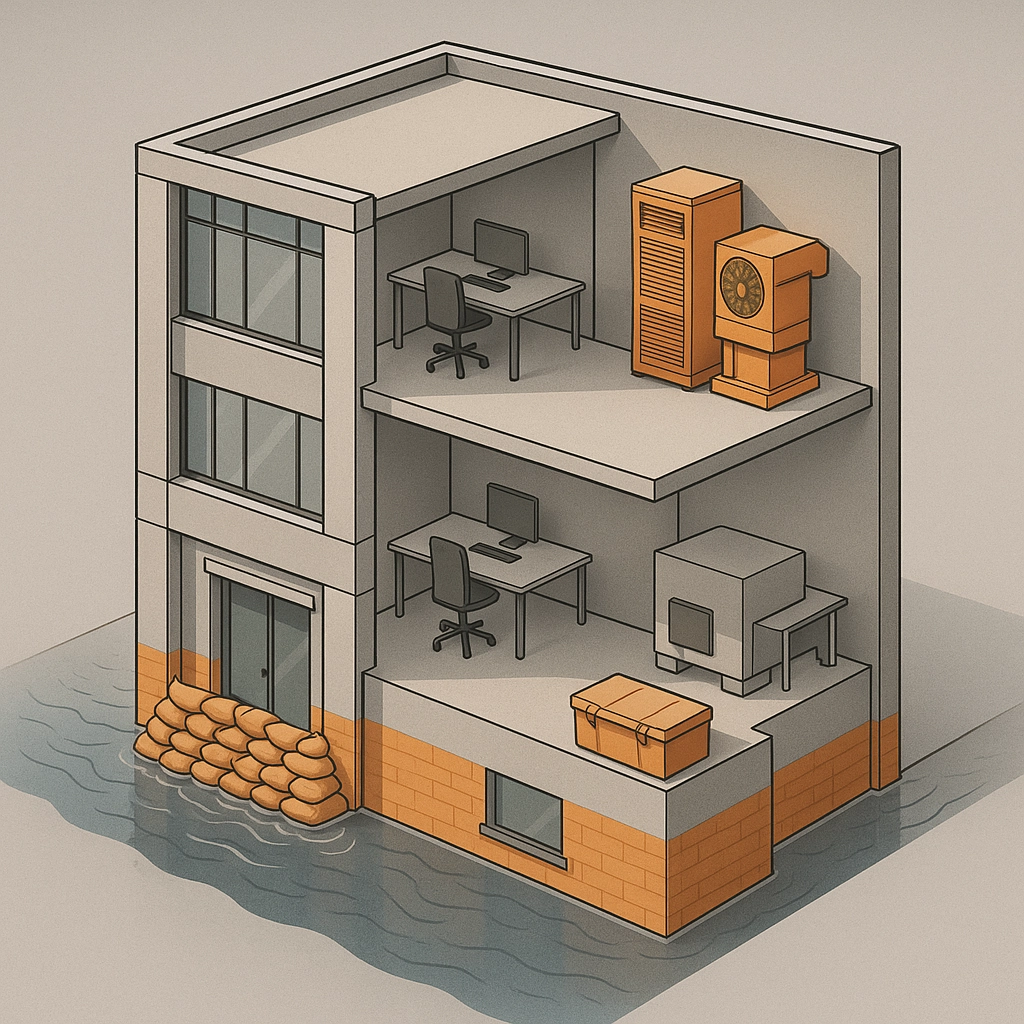
Protect Your Data and Documents
Back Up Everything
Create multiple copies of critical business documents and store them in different locations:
- Digital copies in cloud storage you can access from anywhere
- Physical copies in a waterproof, fireproof safe
- Off-site copies with a trusted friend or family member on another island
Critical documents include:
- Insurance policies
- Legal contracts and business licenses
- Employee records and payroll information
- Financial statements and tax documents
- Vendor contact information and contracts
Test Your Backups
Check your backups regularly to make sure they're actually working. The worst time to discover your backup system failed is when you need it most.
When a Storm Approaches
Once a hurricane is heading toward Hawaii, you switch from long-term planning to immediate action mode.
48-72 Hours Before Impact
- Secure outdoor items that could become projectiles
- Fill generator fuel tanks if you have backup power
- Move vehicles to protected locations
- Install window protection
- Clean floor drains to prevent flooding
Final 24 Hours
- Shut down non-essential equipment to prevent damage from power surges
- Turn off utilities at main shutoffs if flooding is likely
- Move to your safe location with your emergency supplies
- Send final communications to customers and vendors about your status

After the Storm
Safety First
Don't rush back to your business. Wait for official all-clear announcements. Downed power lines, unstable buildings, and contaminated water create serious hazards.
When you do return:
- Document all damage with photos before touching anything
- Contact your insurance company immediately- many have 24/7 claim reporting
- Make temporary repairs only to prevent further damage
- Keep all receipts for emergency repairs and expenses
Communicate with Customers
Let people know your status as soon as it's safe to do so. Use social media, your website, or simple phone calls to update customers about when you expect to reopen.
Even if you can't provide full service right away, staying in touch maintains those important business relationships.
Questions?
Hurricane preparation might seem overwhelming, but breaking it down into manageable steps makes it much more doable. Start with the basics - get flood insurance, create a simple written plan, and secure your most important documents and data.
You don't have to do everything at once. Pick one area to focus on this month, then tackle another area next month. The important thing is to start now, while you have time to do it right.
Remember: The businesses that survive disasters are the ones that prepare before they need to. Your future self will thank you for taking these steps now.
For more information about protecting your business with the right insurance coverage, visit Adams & Associates to get a personalized quote for your Hawaii business.






